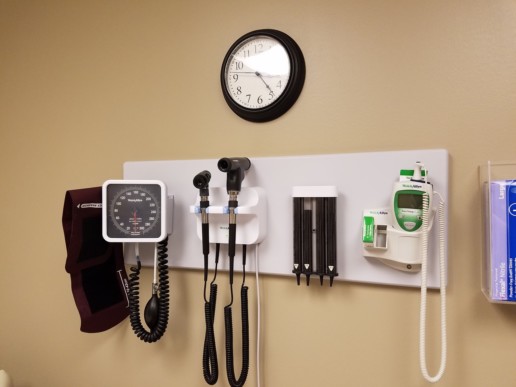3 tips to boost your healthcare literacy with technology
Historically, the relationship between consumers and their health plan providers has been a distant and somewhat bumpy one. Some health plan providers get a bad rap for poor communications, leaving consumers on their own to navigate a health care system wrought with confusing language, red tape, and unpredictable costs.
The events of a global pandemic have compounded the complexity of dealing with the healthcare system. A recent J.D. Power Survey found that more than 60% of privately insured U.S. health plan members did not receive any guidance about COVID-19 from their providers. The lack of healthcare literacy — knowing what questions to ask and where to get care — has also created a bigger gap between everyday people and their providers. But the good news is technology can help us get more out of our benefits, making our relationship with health plan providers more connected.
The COVID-19 pandemic has exposed the need for more TLC and attention when it comes to benefits. But technology can help us get the most out of our benefits — strengthening our consumer relationship with health plan providers. By engaging with technology, we can improve our healthcare literacy, identify cost-saving opportunities and be more prepared for the unexpected.
If consumers are going to make an informed decision during open enrollment, they’ll need information about the number of visits they paid to the doctor and the costs of their claims to determine if they should change plans. Maybe they’re paying a lot more in premiums, or perhaps they didn’t meet their deductible. Being engaged with your benefits is key to getting the most out of them.
Tip: Avoid going on autopilot with your benefits. Benefits offerings are always changing, and health providers often offer programs that you can opt-in to free. Make sure you’re set up to receive notifications from your benefits administrators and health plan providers. Then take action. Use the preventative care offerings, likes annual wellness check-ups, and enroll in the programs that will serve you now and in the future.
During the pandemic, there has also been an increase in the use of AI to improve communication across the healthcare ecosystem. For example, patient care in the emergency room (ER) is traditionally delivered numerically — first come, first serve. However, AI can help doctors and caregivers at hospitals prioritize the needs of waiting patients. This can lead to a decrease in wait times in crowded hospitals — especially important during the pandemic. In the same vein, AI can help an individual decide if they truly need to visit the ER or if a telehealth option would be more effective and affordable.
Caregiver support platforms, like Cariloop, are using cloud-base technology to improve communication between providers, consumers and their families. This employer-sponsored benefit offers tailored caregiving plans and coaching for families looking for pediatric and senior care. Cariloop, and other caregiver support platforms, use technology to tap into a system of trusted providers and build caregiving scenarios with planning and calculator tools. Users can adjust for different scenarios, review whatresources are available, and receive personal coaching throughout the caregiving journey.
Tip: Viewing benefits as an item to check off a list once a year means you might be overpaying or leaving benefits on the table. Using claims integrations and decision support tools, like planning calculators, can help you and your family fully engage with your benefits and improve your healthcare literacy.
Benefits administrators and health plan providers are beginning to see the importance of supporting the whole person — through mental wellbeing initiatives or by offering online tutoring discounts, streaming virtual fitness programs, and food delivery services.
Tip: Look to the different options that providers use to deliver holistic and preventative care options. For example, year-long access to audio-guided meditation apps like Headspace or programs built around the use of wearable technology that rewards users who meet personalized activity goals. These initiatives go beyond regular patient care and give you tools to support your wellbeing — not just when you’re feeling under the weather.
3 tactics to navigate company culture in a remote world
In many respects, COVID-19 reframed our thinking about worklife balance. While this was already a fatigued concept, the pandemic and resulting quarantine fully demolished the fourth wall that stood between work and the personal lives of our team members.
In the early weeks, given our technology enablement already in place, a near immediate shift to fully virtual didn’t seem like a huge shift for many. As the weeks wore on, working parents and those with different challenges at home felt the effects almost immediately. As a working mom myself, I have first-hand experience around what it means to be a mom and an employee at the same time and in the same space, along with my partner also working from home. In fact, my daughter may or may not have “Zoom bombed” a session with our board. Of course, none of them were bothered by it and it probably embarassed me more personally than anything.
As the chief people officer of SailPoint, I’ve seen how balancing continuing to educate our children from home while working full time has taken a toll on many. Half of our workforce have children under the age of 18 living at home. To move forward as a distributed workforce in a way that is sustainable and productive, HR teams need actionable steps to empower today’s working parents.
By implementing specific guidelines that help employees navigate these waters, HR teams can better instill confidence in their employees and provide them with the resources required to drive successful and productive engagement. Small changes, simply starting with an acknowledgement of this issue, helps teams to get their work done on the terms they’re able to design to best fit their needs.
Give employees the formal gift of time
When the pandemic began earlier this year, SailPoint’s approach was centered on “returning to normal.” It’s clear now that a return to normal is not in the cards, and organizations should look at this time as an opportunity to rebuild and create lasting culture changes through new programs and initiatives.
One strategy we’ve found successful at SailPoint is implementing a 2-hour block twice a week when employees have no meetings and can focus on what is most important to them individually. This could range from taking care of their children to getting a presentation done that they haven’t had time for, or even scheduling personal appointments. Whatever it may be, this block we call ‘Free2Focus’ is about giving our crew space to balance the personal demands with the work demands. So far, the response to this time block has been very positive and it allows SailPoint crew members to use their time during the day how they wish in a flexible but formal way. Some crew members are using this time to focus on helping their children with school work, others have used it to have lunch with loved ones. Given that much of schooling from home may fall to women, we also look at this as an inclusion initiative to ensure that part of our workforce isn’t faced with a choice of one or the other.
Restructure your physical office
One aspect of corporate culture that was long overdue for restructuring is the use of the physical office space. At SailPoint, we’ve always offered our crew members flexibility, and this extends to trusting them to decide where they work. We believe that work is our identity, not our cubicle, and COVID-19 has presented us all an opportunity to rethink the office space.
As of September, we have allowed crew members to voluntarily return to the office if they wish at 25% capacity. Moving forward, we’re asking the crew to think of our offices like they would a college library. In college, you would likely go to the library for a place to focus or a place to meet with otehrs. This is how we want the SailPoint offices to operate because we know our crew makes the most impact when they have the autonomy to make their own decisions that work for the individual, their family and their work. There is not a one-size-fits-all when it comes to working styles and personal situations, which is why we want our physical office space to be as flexible as our remote office space.
Commit to community
While this time may have brought us closer to our families, it can be isolating from an employee culture perspective. Some of us are lucky enough to have family support at home, but many do not. It’s crucial that those looking for companionship and emotional support are able to find it, within our community.
Having a strong culture in place is not only invaluable for the individual’s well-being but also vital in keeping employees engaged and motivated. One strategy to achieve this is taking advantage of the technology that connects us. At SailPoint, we have several Slack channels that aren’t related to work to keep our community connected. We have channels for parents, pet lovers, beauty gurus, Texas Longhorns and more, but we also have a channel called SAIL ON. This particular channel is a place for people to post supportive messages, or to just have fun and connect with their community of crew members. So far, this initiative take on a life of its own, as we’ve seen our crew organize fitness competitions, build standing desks for each other’s homes, share their thoughts on "Feel Good Fridays.”
SOURCE: Payne, A. (23 October 2020) "3 tactics to navigate company culture in a remote world" (Web Blog Post). Retrieved from https://www.employeebenefitadviser.com/list/3-tactics-to-navigate-company-culture-in-a-remote-world
Top 10 year-end tax planning tips
Another year is coming to a close, which only means a season of taxes is slowly approaching. Tax time can often be one of the most stressful times of the year for businesses, employees, and even clients, but that just means helping clients with a less stressful year-end planning session more crucial than ever. Read this blog post for helpful tips.
Between the upcoming presidential election and the COVID-19 pandemic and its attendant stimulus packages, this year has seen more than its share of uncertainty around tax — which makes helping clients with year-end planning all the more crucial.
“Year-end tax planning is more important than ever this year,” said Renato Zanichelli, national managing partner of tax services at Grant Thornton, in a statement. “Businesses both large and small have been dealt a tough hand. Having the right tax strategy will help businesses navigate this time of historic disruption and put them on the right track as a new year begins.”
“Lawmakers dedicated trillions of dollars to keep families and businesses afloat, but those provisions may also require quick action, in many cases by the end of this year,” added Dustin Stamper, managing director in the firm’s Washington National Tax Office. “The government wants to get money in the hands of those who need it, and many of the most generous provisions are tax changes that provide welcome liquidity for businesses and timely relief for individuals.”
With that in mind, the Top Eight Firm has put together a list of 10 key tax considerations for year-end planning for both individuals and businesses (below); for more see their year-end tax planning guides.
Accounting method changes are among the most powerful ways to accelerate deductions, but remember any non-automatic changes a company wants to make effective for the 2020 calendar year must be made by the end of the year. C corporations make NOL refund claims themselves, but passthrough businesses like partnerships and S corporations pass losses onto to owners, who will make claims.
The fastest way to obtain a refund is generally by filing a tentative refund claim, but these must be filed by Dec. 31, 2020, for the 2019 calendar year. If losses will be in 2020, the business should start preparing to file early, because they cannot claim an NOL carryback refund until they file their tax return for the year.
Tax rules allow businesses to claim certain losses attributable to a disaster on a prior-year tax return. This is meant to provide quicker refunds. President Donald Trump’s COVID-19 disaster declaration was unprecedented in scope, designating all 50 states, the District of Columbia and five territories as disaster areas. This means essentially every U.S. business is in the covered disaster area and may be eligible for refunds from certain types of losses. Under this provision, a business could claim a COVID-19 related disaster loss occurring in 2020 on a 2019 amended return for a quicker refund. The provision may potentially affect losses arising in a variety of circumstances, including the loss of inventory or supplies or the closure of offices, stores or plants. To qualify, the loss must actually be attributable to or caused by COVID-19 and satisfy several other requirements.
3 small business leaders on what it takes to survive the pandemic economy
Now more than ever, business leaders are having to take the roads less traveled when it comes to allowing their businesses to succeed. The pandemic economy has caused many to struggle, and many are stepping out to talk about what they've learned. Read this blog post to learn more.
Building a business is never easy, but 2020 has been a unique calamity. In the U.S., which has suffered more COVID-19 deaths than any other nation, the economy entered its worst downturn in generations. Although central bank stimulus and government programs such as the Paycheck Protection Program have helped cushion the blow, a return to growth will depend on the creativity and resilience of millions of entrepreneurs and business managers.
Lindsay Gibson, COO, TextNow
Over a decade, TextNow built its business, an app that allows users to send and receive calls and text messages for free, by hosting ads for hotels and airlines and the like. Within weeks of the COVID-19 pandemic hitting the U.S. and Canada, one-quarter of TextNow’s revenue disappeared. The company closed its Waterloo headquarters, as well as offices in Portland, Ore., and San Francisco. All employees started working from home.
Lindsay Gibson, the chief operating officer, stayed relatively calm. A 16-year career at cellphone maker BlackBerry taught her how to navigate an organization on “a downward slope,” as she puts it. At BlackBerry, she once had to cut 250 jobs on her first day in a new role. She remembers it as the beginning of five years of doing more with less.
Her strategy then, and now, was to make plans. Plan A at TextNow was to slash revenue targets and cut expenses. The company eliminated 19 jobs, froze hiring, and ended employee perks such as personal trainers and free lunches. Biweekly companywide Zoom meetings were instituted to keep staff up to date and fortify plunging morale. For three months the mood became “very conservative, very heads down, and very focused,” Gibson says.
The company quickly found opportunities for growth. With so many people unable to visit friends or relatives, TextNow started testing a video chat function. Amid the economic downturn, hundreds of thousands of people could no longer afford to pay their AT&T or Verizon bills, so TextNow’s appeal increased. As school moved online, teachers began using TextNow to communicate with parents and students.
By July, TextNow was growing again. It lifted the hiring freeze and recruited a chief growth officer to beef up marketing and help win customers. TextNow is on track to meet or exceed its new revenue targets, Gibson says.
Brian Butler, president and CEO, Vistra Communications
Brian Butler is used to dealing with disaster. The Gulf War veteran — who still suffers from injuries and hearing loss sustained during his Army service — oversaw a munitions plant in Virginia at the time of the Sept. 11 attacks, helped coordinate Hurricane Katrina relief from the Pentagon, and started his marketing and communications business just before the 2008 financial crisis.
So in January, when he first read about a virus sweeping China, he started to prepare. In February he ordered five laptops for a core group of employees and by March had purchased 35. When other companies found themselves struggling to find equipment, his staff was settled and working from home. “I was a planner in the military,” Butler says. “I heavily rely on my ability to think and plan before I do.”
Still, in just a few months, Vistra lost two clients and three major contracts, including a hospital, a large beverage company, and a tourism agency that canceled events, contracts, or big projects. The company responded with an online campaign it called “V Positive.”
“We put up positive messages on a weekly basis,” Butler says. “That generated more good leads for us, just by doing that. So while in some areas we lost a few customers, in some areas we gained a few.”
In late May, the video of George Floyd’s death led to worldwide protests against police killings of Black Americans. Butler is Black, and 48% of his employees are people of color. Vistra started a new business line that offers tailor-made diversity training to customers.
As the months of working from home passed, Butler says he focused more on his staff’s well-being. He gave each employee $150 to “buy something that will help them work better.” The company, which already holds weekly and monthly video calls for staff, started including more informal Thursday morning coffees and Friday afternoon sessions with his father, a chaplain. Butler says the idea stemmed from his experience in the Army, where every battalion has its own chaplain. “And I thought, Hmm, why does it have to be different in the workplace?”
By late August, most of the clients the company had lost in the early days of the pandemic were back on Vistra’s roster. Butler says he’s working from his home for the foreseeable future, just a few miles from the office — and a few feet from the bedroom where he founded his company 13 years ago.
Melissa Wirt, founder, Latched Mama
Melissa Wirt thought she knew about juggling responsibilities. She founded Latched Mama to provide affordable, functional clothing for nursing mothers six years ago, when she had just two children. Today she’s the mother of five.
Then in February, the coronavirus shut down the factories of some of Latched Mama’s suppliers in China. It took a few more weeks before it hit her team — most of them working mothers — in Virginia. “So many moms’ lives, within a 24-hour period, were turned upside down,” she recalls. “Kids stopped going to school on a Friday and didn’t go back on a Monday.”
Wirt’s mother came up from Florida to help take care of her kids. Another mom couldn’t come to the office anymore when school and day care closed. “So her husband is now coming into work” and is on Latched Mama’s payroll, Wirt says, and the woman is doing social media work for the company from home.
In other ways, the work-from-home lifestyle proved a boon to Latched Mama’s business. Women are treating themselves to more comfortable clothes, boosting sales from last year, Wirt says.
Her staff, many at home or working half-shifts, weren’t able to pack and ship fast enough to meet the elevated demand. One of her employees got COVID-19 during the summer, and fear of the virus remained high.
So Wirt recruited teenagers, including a 16-year-old neighbor, to work part time. She also hired two people to manage shipments and warehousing, scooping them up from a nearby distribution company that went bust during the pandemic. “In some ways it’s an amazing problem to have,” Wirt says. “But it’s also hard as a small business because you also have to keep your employees safe. It’s just a lot of balls in the air at the same time.”
Productivity has ticked down. But Wirt says she feels that’s a small sacrifice in an unprecedented year.
“If we need to cut some profit to be able to make sure that people can relax and take a deep breath and be there for their kids and get through this pandemic together, then that’s what we’re going to do.”
SOURCE: Dmitrieva, K.; Kazakina, K.; Greenfield, R. (07 October 2020) "3 small business leaders on what it takes to survive the pandemic economy" (Web Blog Post). Retrieved from https://www.benefitnews.com/articles/3-small-business-leaders-on-what-it-takes-to-survive-the-pandemic-economy
Tackle growing healthcare costs with earned wage access
As open enrollment begins to trickle in, advisors are looking for new and improved ways to help employees to leverage out of pocket costs on the year that is upon them. For both and employers and employees, healthcare strategies are an integral part of workforce management. Read this blog post to learn more.
It’s that time of year when we all learn that health care costs are going up (again).
As the nonprofit Business Group on Health reported, the average employee will be hit with $15,500 in out-of-pocket costs next year, and the average employer will pick up about two-thirds of that tab. Even with shared responsibility, those are big hits for both employer and worker, which is why health care strategy must be integral part of workforce management.
However, benefits managers may not be aware of a tool that may help keep health care costs down for both employers and workers, and which lets employees more fully participate in the economy they helped create.
Earned Wage Access (EWA), sometimes known as on-demand pay, is a revolutionary benefit that I wrote about back in May. It comes at no cost to employers, and is available to workers at little or even no cost, depending on the provider.
Earned Wage Access allows workers to access a portion of their earned wages that they have not yet been paid on. Depending on the provider, those wages can be immediately accessed on the provider’s payroll card, or just about any debit card.
What does on-demand pay have to do with health care?
When employees receive medical services, payment is often required up front. If employees only get their paycheck every two weeks, they may not have access to liquidity to pay for those services. The result is that an employee may be forced to delay a necessary visit or procedure, and if they are suffering from an acute condition, their health may be severely compromised.
However, with immediate access to the money employees have earned, but not yet been paid on, they have access to health care in the moment. Waiting rooms are bad enough. Waiting periods for basic health care are unnecessary and harmful.
There’s another reason why on-demand pay is critical to your health care strategy. There is a stealth health care crisis brewing in America. Millions have delayed preventative and necessary care due to the COVID-19 situation.
Every delayed preventative screening, test or check-up can result in a failure to discover a serious medical condition that requires treatment. That raises treatment costs down the line for both company health plan and employee.
By wrapping earned wage access into your health care strategy, you can encourage workers to utilize preventative and maintenance care at any time — not just on payday. Doing so also eliminates a common impediment: some people just don’t like to go to the doctor. If they have the excuse not to go, they’ll use it. EWA removes that psychological obstacle.
The same goes for access to medications. High cholesterol, high blood pressure, anxiety/depression, and many other chronic conditions require regular doses of prescribed drugs. Missing even a single day of some of these medications can significantly increase risk of adverse consequences in patients.
Earned wage access allows employees to refill medications when they need to. Waiting can be deadly. Some EWA providers even offer prescription discounts with their smartphone app.
Physicians encourage timely health care for obvious reasons. Employers should encourage it as well, not only out of concern for workers, but because timely health care can result in lower health care costs. However, it’s one thing to encourage timely health care visits. It’s another to offer timely pay to workers so they can meet that request. Earned wage access creates immediate health care access.
On-demand pay usually comes at no cost to employers. Some providers are already integrated with the largest payroll services, and others are integrated with dozens of them. The cost of earned wage access varies by provider, but certain ones offer the service at no cost for employees who use the provider’s payroll card. Other services have costs that are extremely low.
Adding earned wage access to your benefit plan will benefit your overall health care strategy, and your employees.
SOURCE: Meyers, L. (05 October 2020) "Views: Tackle growing healthcare costs with earned wage access" (Web Blog Post). Retrieved from https://www.employeebenefitadviser.com/opinion/tackle-growing-healthcare-costs-with-earned-wage-access
Pandemic Causing Many to Lose Employer-Sponsored Health Coverage
Many small businesses have suffered due to the implications that the coronavirus pandemic has placed on them. Many of those struggles are rooted in financial instability during this time which has caused many to stop paying health insurance premiums. Read this blog post to learn more.
The COVID-19 pandemic forced many small businesses to stop paying health insurance premiums to insurers, leaving their employees without group health care coverage. Even more workers could find themselves without health insurance if businesses can't afford to renew their group plans for 2021, when premiums are expected to trend slightly higher.
If the coronavirus spikes again across the U.S. and a "second wave" further restricts business operations, more employees could find themselves uninsured.
We've rounded up articles from trusted news sources on the loss of employer-sponsored health insurance and what might be coming.
Employers No Longer Able to Afford Coverage
Health insurance coverage is a major expense for employers, especially for small businesses. As they struggle with the economic fallout of the pandemic, many may face end-of-year renewal deadlines that are harder to afford.
Thousands of small businesses that had always expressed difficulty in providing employee health insurance under the Affordable Care Act are now in far worse trouble because of the pandemic.
While estimates vary, a recent Urban Institute analysis of census data says at least 3 million Americans have already lost job-based coverage, and a separate analysis from Avalere Health predicts some 12 million will lose it by the end of this year. Both studies highlight the disproportionate effect on Black and Hispanic workers.
"The odds are we are on track to have the largest coverage losses in our history," said Stan Dorn, the director of the National Center for Coverage Innovation at Families USA, a Washington, D.C., consumer group.
(New York Times)
Race-Based Disparities in Coverage Loss
Overall, 8 percent of Americans reported in September that they had lost their health insurance specifically due to the pandemic, according to a series of surveys conducted by data research firm Civis Analytics and global communications firm Finn Partners. That figure was higher among Black Americans, with 10.4 percent reporting they had lost their health insurance because of the pandemic. In contrast, 6.8 percent of white Americans said in September they had lost their health insurance because of the coronavirus outbreak.
Overall, among Black Americans, 26 percent were uninsured in September, up from 17 percent in February. Among white Americans, 12 percent were uninsured in September, up from 11 percent in February.
(ValuePenguin)
Small Businesses Under Pressure
Small businesses, defined as those employing fewer than 500 workers, are under extreme pressure to cut costs. But in spite of across-the-board cost-cutting, a survey of small U.S. businesses in late June found only 5 percent had resorted to cutting health insurance benefits for their employees.
However, nearly one-third of survey respondents indicated they were not sure they could keep up with premium payments beyond Aug. 15.
To examine whether federal financial assistance enabled businesses to maintain health insurance coverage, researchers compared health care offer rates to employees by businesses reporting they had been approved for federal Paycheck Protection Program (PPP) funds with rates for those not approved, as of June 15. The firms that received PPP funds were much less likely to drop coverage than firms that did not.
The PPP stopped accepting loan application requests in early August.
(NEJM Catalyst)
Indiana's Experience
In April, Indiana saw about 560,000 residents losing employment, according to Mark Fairchild, director of public policy at the nonprofit Covering Kids & Families of Indiana. At the start of September, the number had fallen below 400,000 and is trending downward.
"We've recovered dramatically, but that still is going to leave over 10 percent of Hoosiers without a job," Fairchild said. "And related to that, of course, the insurance that goes with that impacts not just them, but their family members, too."
Counting the spouses and children who may have been covered by family plans, he estimates that upwards of a million Indiana residents may have lost employer-sponsored health coverage during the pandemic.
The loss of health insurance doesn't fall equally on everyone, as some sectors of the economy, like hospitality and service jobs, have been hit harder than others.
(Side Effects/WFYI Indianapolis Public Media)
DOL Temporarily Extends COBRA Sign-Up Deadlines
In response to the COVID-19 pandemic, the U.S. Department of Labor (DOL) temporarily extended the period in which eligible employees can elect COBRA health insurance continuation coverage and the deadline for them to begin making COBRA premium payments.
The final rule extended most COBRA deadlines to beyond the "outbreak period," defined as from March 1, 2020, to 60 days after the end of the declared COVID-19 national emergency, or another date if provided in future guidance.
"Any COBRA premiums due during the outbreak period will not be considered delinquent if the COBRA premiums are paid within 30 days following the end of the outbreak period," said Paul Yenerall, a Pittsburgh-based attorney with Eckert Seamans Cherin & Mellott.
Employers may require individuals to pay for COBRA continuation coverage. The premium that is charged cannot exceed the full cost of the coverage, plus a 2 percent administration charge. That cost is not affordable for many newly unemployed workers.
During the pandemic, however, some employers are choosing to pay for a former employee's COBRA coverage if the person has been laid off, or to do so for current employees who lost group health plan coverage when they were furloughed or had their hours reduced.
(SHRM Online)
SOURCE: Miller, S. (01 October 2020) "Pandemic Causing Many to Lose Employer-Sponsored Health Coverage" (Web Blog Post). Retrieved from https://www.shrm.org/resourcesandtools/hr-topics/benefits/pages/pandemic-causing-many-to-lose-employer-sponsored-health-coverage.aspx
3 Ways to Motivate Your Team Through an Extended Crisis
Another month of working remotely has passed, and many employers are beginning to flag a lack of motivation, performance, and well-being coming from team members. It's important for managers to re-energize their teams and to identify the struggles which are holding them back. Read this blog post to learn more.
As we flip our calendars to yet another month of our large-scale Covid-19 remote-work experiment, it's no wonder that motivation, performance and well-being are flagging for many. Months in, managers need new tools to reenergize their teams, to accurately identify and diagnose recurring struggles and to empathetically help employees address their problems.
A large part of a leader's responsibility is to provide structure, guidance and regulation; yet many workplace studies point to the fact that the most important gauge for a healthy work environment isn't a strong external framework, but whether individuals can foster internal motivation.
Using a well-established theory of motivation called self-determination theory, or SDT, we have identified three main psychological needs that leaders can meet to help their employees stay engaged, confident and motivated.
1. Relatedness
This means that your employees feel cared for and that you've fostered a sense of belonging. Make time to listen to your employees' perspectives and make them know that they are heard and valued. A few simple practices may help:
- Acknowledge and validate your employees' emotions as well as their reactions. ("I know it can be tough to stay focused right now, but we'll figure it out together!")
- Don't let people get lost in the crowd: Reduce team size and acknowledge each member's work and achievements to the extent possible.
- When problems arise, make sure to get full feedback from those involved. This helps you identify the biggest issues and obstacles, while strengthening connection and encouraging communication.
- Emphasize that people's contributions are unique and necessary; do not let good work go unacknowledged.
- Communicate that you care about employees' well-being, not just their productivity.
2. Competence
This refers to when a person feels effective and experiences growth. Research shows that holding employees accountable for achievable goals can improve performance, and motivational science also suggests that trust begets trust. Try these approaches to help ignite your team's internal motivation:
- Involve your employees in decisions where their input could be valuable. Asking for suggestions to optimize an ongoing process, for example, can help maximize a sense of empowerment, progress and ownership.
- To demonstrate their mastery of a particular task or skill, ask an employee to explain to their colleagues what they're working on or why they chose a particular strategy.
- Set up check-ins to regularly discuss progress on individual goals and create strategies to meet them.
3. Autonomy
Effective leaders foster internal motivation by empowering employees' sense that they are the authors of their actions and have the power to make choices that are aligned with their own values, goals and interests, as well as their team's. Leaders should encourage autonomy and be genuinely caring while also recognizing that each employee carries responsibilities for achieving team objectives. To help foster a sense of autonomy we recommend that leaders:
- Encourage self-initiation and participation. Perhaps ask, "What part of this project can you see yourself leading?"
- Avoid controlling language ("Get this to me by tomorrow!") and minimize coercive controls like unrealistic deadlines and constant monitoring of your employees. Instead, find ways to motivate them through encouragement and positive feedback, such as, "I know it's a tight deadline, but having your skills on this team will be so helpful to our client."
- Be transparent by providing the rationale behind demands. People are more willing to put in their full effort when they understand why a given task is important.
A person's work environment plays a big role in whether these three channels surge or jam, so it's no surprise that motivation is especially at risk in these pandemic times. No matter what the circumstances are, we are most energized and committed when we are internally motivated by our own values, sense of enjoyment and growth — in short, internal motivation inspires us to be our best selves. By meeting the three psychological needs, leaders help employees be engaged and feel valued at work (relatedness), feel motivated by growth (competence), and feel empowered and confident in their skills (autonomy). Employees who feel unappreciated or coerced will, at best, often half-heartedly comply with a boss's orders without whole-heartedly committing to excellence. At worst, they will lose all sense of motivation and fail to meet goals and deadlines.
SOURCE: Bradford, A.; Ryan, R. (02 October 2020) "3 Ways to Motivate Your Team Through an Extended Crisis" (Web Blog Post). Received from https://www.shrm.org/resourcesandtools/hr-topics/employee-relations/pages/3-ways-to-motivate-your-team-through-an-extended-crisis.aspx
Three keys to creating remote team chemistry
The chemistry between team members is often a key building block in successful communication and growth. Now that most workplaces are working remotely and team members are not face-to-face each day, creating a powerful and positive team takes a more delicate approach. Read this blog post to learn more.
Scottie Pippen once said, “Chemistry is a very important element for any team that wants to be serious about winning.” As a six-time NBA champion, Pippen knows a thing or two about winning. His chemistry with Michael Jordan and the Bulls’ supporting cast created one of the greatest dynasties in sports history.
Chemistry — the way teams work together — has always been the X-factor in success stories. Today, in a world where working from anywhere is becoming the standard, creating and harnessing chemistry is newly challenging but just as important as ever.
One of the great challenges of working remotely is replicating the interactions and relationships that develop naturally in a physical office. Camaraderie and morale, huge factors in developing positive team chemistry, can’t be forced. Chemistry isn’t quantifiable or trackable; it’s an organic quality that changes over time, much like company culture. Leaders can’t force chemistry to happen nor should they try. Instead, creating a powerful, positive team chemistry remotely takes a more delicate approach.
When it comes to chemistry building, consider being both active and passive. If you’re too active in promoting bonding and friendship, your efforts may end up ringing hollow. If you’re too passive, you won’t know what’s going on with your team. A healthy remote management style will go a long way in promoting chemistry but won’t get you all the way there. You have to supplement good managerial practices with procedures designed to promote trust and kinship between team members.
Create a space for chemistry
One of the first steps to establishing remote chemistry is to provide people with a space to talk about non-work matters. When you had an office, this space already existed in the form of hallways, breakrooms, the moments before and after a meeting, and more. Creating a virtual water cooler (you can even set specific hours for it in Zoom) will encourage people to discuss their lives outside of their careers. These discussions bring people together, making them more likely to trust and rely on one another.
Better than just providing a space for these talks is giving folks something to talk about. Creating a book club, fantasy football league or TV-watching group will ensure that people will have common experiences to talk about. If you want to go full meta, you could even watch the Emmy-winning documentary series “The Last Dance” about the Chicago Bulls and discuss team chemistry itself.
Welcome new team members
If you’ve added new employees during 2020, you know how hard it can be to make them feel like a part of the team. Odds are, new hires have never met the people with whom they are most closely collaborating. It’s not hard to see how that could create a problem. To avoid a world where new team members feel like anonymous hired guns, you have to actively create warmth and kinship.
New hires should receive both formal and informal introductions to their new coworkers. A structured meet and greet will allow people to learn quick facts about each other, work preferences and other essential details. A virtual happy hour will give people a chance to get to know each other in a less rigorous way. By the end of a new employee's first week, they should have experienced both.
Share challenges and victories alike
Nothing brings people together like shared experiences. When you go through a tough client experience with fellow team members, you grow closer to them. When somebody helps you on a project that yields great results, you trust them more than you did before. The essential value of team chemistry comes from a sense that you’re all in this together. To make people feel that way, you have to let them talk about what they’re going through.
Talk about Zoom fatigue. Talk about the clients who struggle to accept a tech-heavy reality. Talk about what’s working and what isn’t. Talk about how hard it is to juggle a family and work with everyone under one roof. Talk about it all. When it comes to team chemistry, conversation is never an enemy.
SOURCE: Vetter, A. (05 October 2020) "Three keys to creating remote team chemistry" (Web Blog Post). Retrieved from https://www.employeebenefitadviser.com/list/three-keys-to-creating-remote-team-chemistry
Companies to shrink offices as work stays remote after pandemic
The coronavirus pandemic has taught companies many things, one of those being that it may be time to allow employees to work remotely full-time when the pandemic ends. Read this blog post to learn more.
More than half of companies plan to shrink their offices as working from home becomes a regular fixture after the COVID-19 pandemic ends, according to a survey by Cisco Systems.
Some 53% of larger organizations plan to reduce the size of their office space and more than three quarters will increase work flexibility. Almost all of the respondents were uncomfortable returning to work because they fear contracting the virus, the poll found.
Cisco, the largest maker of networking equipment, recently surveyed 1,569 executives, knowledge workers and others who are responsible for employee environments in the post-COVID era. The findings suggest many of this year’s radical changes to work life will remain long after the pandemic subsides.
The poll, conducted for Cisco by Dimensional Research, concluded that working from home is the “new normal.” More than 90% of respondents said they won’t return to the office full time. 12% plan to work from home all the time, 24% will work remotely more than 15 days of each month, while 22% will do that eight to 15 days every month.
Cisco’s Webex video conferencing service has benefited from lockdowns that have kept millions of people working and studying from home. It’s also faces rising competition from Zoom Video Communications.
For employees who do return to the office, Webex is adding environmental sensors that plug into its current video-conferencing gear. That will help companies identify over-used and under-utilized spaces, while complying with room capacity limits and checking if workers are wearing masks.
SOURCE: King, I. (06 October 2020) "Companies to shrink offices as work stays remote after pandemic" (Web Blog Post). Retrieved from https://www.employeebenefitadviser.com/articles/companies-to-shrink-offices-as-work-stays-remote-after-pandemic
U.S. Adds 661,000 Jobs; Unemployment Rate Drops
According to recent studies, the job-loss numbers that businesses saw at the beginning of the coronavirus pandemic has begun to shrink. The unemployment rate fell from 8.4 percent to 7.9 percent in August. Read this blog post to learn more.
U.S. payrolls increased by 661,000 in September, according to the latest report from the Bureau of Labor Statistics (BLS)—falling below what economists expected. The report is more evidence that the pace of hiring has slowed, as more layoffs loom.
The unemployment rate fell to 7.9 percent from 8.4 percent in August. Economists had been expecting an employment gain of 800,000 and the unemployment rate to fall to 8.2 percent.
The economy has now recovered 11.4 million of the 22 million jobs lost in March in April at the beginning of the pandemic, but job growth is stalling—September was the first month since April that net hiring was below 1 million.
This slowdown is occurring as large corporate layoffs not reflected in the report are imminent: Walt Disney Co. announced 28,000 permanent layoffs and U.S. airlines are proceeding with tens of thousands of job cuts.
"The economy may have added jobs, but at a pace way too slow considering how many jobs were lost earlier this year," said Nick Bunker, an economist at the Indeed Hiring Lab. "The unemployment rate may have dropped, but the share of people with a job only moved up slightly. This report is an illusion of progress at a time when we needed accelerating gains in the labor market. We are not where we need to be, nor are we moving fast enough in the right direction as we head into fall."
The BLS report is the last one before the presidential election on Nov. 3.
"The report shows we are still clearly in the snap-back phase of the recovery, as jobs that were switched off because of COVID are blinking back online," said Andrew Challenger, senior vice president of global outplacement and executive coaching firm Challenger, Gray & Christmas, based in Chicago. "While we're seeing jobs come back, there is concurrent destruction occurring in the labor market as companies right-size their organizations to meet the decidedly lower demand they expect to face over the next two or three years," he said.
Employers continue to bring back workers—about half of the workers furloughed or laid off at the onset of the pandemic have now been rehired—but the pace of recovery is slowing while there is still a long way to go, said Julia Pollak, a labor economist at ZipRecruiter, an online employment marketplace in Santa Monica, Calif. "Even after the recent gains, we still have nearly 11 million fewer jobs than before the pandemic," she said. "By comparison, we lost 8.7 million jobs in the Great Recession."
Becky Frankiewicz, president of ManpowerGroup North America, said that the BLS report shows steady improvement, especially hiring in leisure and hospitality and operations and logistics.
Job gains were broad-based, with most sectors of the economy adding to payrolls in September, said Andrew Chamberlain, chief economist at Glassdoor.
Employment in leisure and hospitality increased by 318,000, with almost two-thirds of the gain occurring in restaurants and bars. Despite job growth totaling 3.8 million over the last five months, employment in this sector is still down by millions since the onset of the coronavirus.
Retailers added 142,000 jobs, with most of those coming in clothing stores.
"The recovery is primarily being driven by continued rehiring in the hardest-hit industries including leisure and hospitality, retail and health care," Chamberlain said.
"Many service-sector industries are continuing to recover briskly as many states and cities eased coronavirus restrictions and increased capacity limits on restaurants, gyms and stores," Pollak said. "As restrictions are lifted in the largest cities, we can expect to see a rapid bounce back."
She added that some industries haven't yet begun to recover. "The education sector is still shedding jobs, as are the performing arts and spectator sports, hospitals, coal mines, facilities support services and travel agencies."
Professional and business services contributed 89,000 jobs and the transportation and warehousing sector was up 74,000 jobs. Manufacturing grew by 66,000, financial activities added 37,000 and construction employment grew by 26,000 jobs last month, mostly in residential building. By comparison, nonresidential building gained 5,300 jobs and infrastructure work lost 3,400 positions.
Public-sector employment declined by 216,000 jobs in September, mainly due to state and local public schools failing to reopen due to the national health crisis. "Another deeply concerning thing is that we are down 1.2 million state and local government jobs over the last seven months, more than two-thirds of them in education," said Heidi Shierholz, senior economist at the Economic Policy Institute in Washington, D.C. This will only get worse without aid from Congress, she added.
A decrease of 34,000 jobs in the federal government was driven by a decline in the number of temporary Census 2020 workers. "Nearly a quarter of a million jobs are temporary jobs related to the decennial census that will disappear in the next few months," Shierholz said.
Unemployment Concerning
The official unemployment rate is now in line with previous recessions.
Chamberlain pointed out that the number of workers on temporary layoff declined sharply from 6.2 million in August to 4.6 million in September, "a reminder that the nation's impressive job growth in September is still largely driven by rehiring of furloughed workers as a patchwork of state and local government health restrictions are gradually lifted throughout the country."
But the number of workers whose layoffs became permanent rose in September, a sign that joblessness will become longer lasting. "There was a surge of 351,000 workers who have been permanently laid off," Shierholz said. "This does not bode well at all for the pace of the recovery."
Shierholz argued that the unemployment picture is much worse than the headline number of 12.6 million workers officially counted as unemployed. She said that there were an additional 800,000 workers temporarily unemployed but misclassified as employed and another 5 million workers out of work as a result of the virus but being counted as having dropped out of the labor force because they weren't actively seeking work.
"If all these workers were taken into account, the unemployment rate would have been 12.5 percent in September," she said. "There are also 9 million workers who are employed but have seen a drop in hours and pay as a result of the virus."
Another concern is that the decline in the unemployment rate came along with a 0.3 percentage point drop in the labor force participation rate to 61.4 percent. That's nearly 700,000 people.
"The decline in the unemployment rate in September was mostly for bad reasons—people dropping out of the labor force, not people getting jobs," Shierholz said.
The prime-age employment rate also decreased and long-term unemployment (unemployment lasting more than six months) increased by 781,000 to 2.4 million workers.
However, a measure that counts discouraged workers and those working part-time for economic reasons also declined, falling from 14.2 percent to 12.8 percent.
The unemployment rate fell for all demographic groups. The rate declined for Asian workers from 10.7 percent to 8.9 percent; for Black workers from 13 percent to 12.1; for Hispanic workers from 10.5 percent to 10.3 percent; and for white workers from 7.3 percent to 7.0 percent.
"One surprising thing about the job loss of March and April is that it was fairly racially equitable—the black and white unemployment rates both rose by about 11 percentage points," Shierholz said. "But the period since then has been a totally different story. Since the peak, the white unemployment rate has come down more than 50 percent faster than the Black unemployment rate."
Pollak said that women also continue to bear the brunt of the economic pain. "This is the first recession where the percentage decline in service-sector employment has exceeded that in the goods-producing sector," she said. "The industry distribution of job losses has been unfavorable to women, who are heavily concentrated in face-to-face services. School closures have also had a larger effect on female labor force participation. Since February, the labor force participation rate for men aged 25 to 54 has fallen by 1.6 percentage points, while that for women in the same age group has fallen by 2.8 percentage points.
The unemployment rate for men fell from 8.0 percent in August to 7.4 percent in September. The rate for women dropped from 8.4 percent to 7.7 percent during that time.
Declining female workforce participation is an area to watch and take action to address, Frankiewicz said. "We're advising clients to focus on offering flexible work options, autonomy for people to choose schedules that work best, and to think about the skills that are needed vs. desired for new roles."
SOURCE: Maurer, R. (02 October 2020) "U.S. Adds 661,000 Jobs; Unemployment Rate Drops" (Web Blog Post). Retrieved from https://www.shrm.org/resourcesandtools/hr-topics/talent-acquisition/pages/bls-hr-jobs-unemployment-october-2020-covid19-coronavirus.aspx










